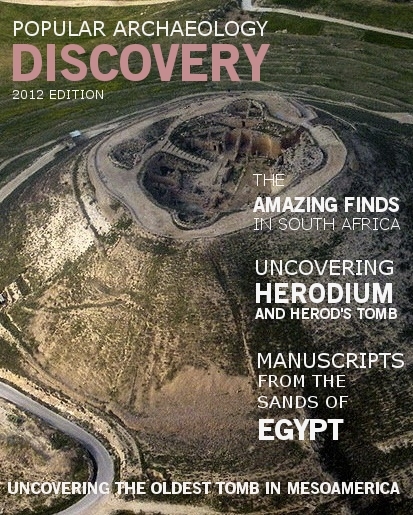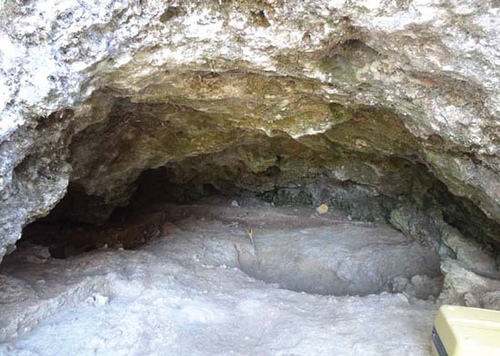
An international team of scientists have announced new evidence supporting the long-debated hypothesis that Neanderthals, a now extinct ancient human cousin species that lived more than 30-40,000 years ago, intentionally buried their dead.
Led by William Rendu and colleagues of the Center for International Research in the Humanities and Social Sciences, New York City, in collaboration with researchers from the University of Bordeaux in France and Archéosphère, a private research firm, they analyzed results of excavations Rendu and an excavation team conducted at the bouffia Bonneval, La Chapelle-aux-Saints cave system site, in southwestern France, in 2011 and 2012, including the results of an excavation conducted there over 100 years ago. The site is famous for the discovery in 1908 of a nearly complete Neanderthal skeleton with evidence that has been interpreted to suggest that the skeleton was intentionally buried by other Neanderthals. That interpretation, however, has been historically challenged by many scholars.
Now, through the renewed excavations, the scientists found the remains of an additional adult and two youth or children and additional elements of the 1908 skeleton find, along with bones of reindeer and bison and numerous lithic tools of the type usually associated with Neanderthals. They also conducted further study of the geological context of the initial 1908 finds and that of the new finds. They determined that the pit or geological depression where the original skeleton was found in 1908 was not a natural feature of the cave floor, and that it best fit the hypothesis that it had “anthropic origins” (created by humans).
_________________________________________________________________________________________
The bouffia Bonneval at La Chapelle-aux-Saints and its Neanderthal burial pit. Image courtesy Cédric Beauval.
________________________________________________________________________________________
Moreover, their examination of the reindeer and bovid (bison) remains associated within the same time and spatial context as the Neanderthal remains indicated a significant difference in their relative condition. In contrast to the Neanderthal, the reindeer and bovid bones exhibited clear deterioration or wear due to climatic, mechanical, and carnivore activity.
Combined with the geological analysis, the researchers came to a clear conclusion.
As Rendu, et al., write in their report:
The results of the comparative taphonomic analysis of the human and faunal materials demonstrate that the LCS1 Neandertal [1908 skeleton find] corpse was rapidly interred and protected from the post-depositional modifications experienced by the faunal remains. The existence of an artificially modified pit and the rapid burial of the body constitute convincing criteria for establishing purposeful burial during the Middle Paleolithic of Western Europe.*
In short, they say, the debatable hypothesis has been strengthened: Neanderthals buried their dead.
Adds Rendu, “While we cannot know if this practice was part of a ritual or merely pragmatic, the discovery reduces the behavioral distance between them and us.”
The detailed report has been published in the Proceedings of the National Academy of Sciences.
__________________________
*Article #13-16780: “Evidence supporting an intentional Neandertal burial at La Chapelle-aux-Saints,” by William Rendu et al.
Cover Photo, Top Left: Homo neanderthalensis, State Office for Heritage Management and Archaeology Saxony-Anhalt / State Museum of Prehistory Halle, Wikimedia Commons
______________________________________________________________________________________________________________________
Read about the most fascinating discoveries with a premium subscription to Popular Archaeology Magazine. Find out what Popular Archaeology Magazine is all about, including the special Holiday Discount offer. AND MORE:
 On the go? Purchase the current issue of Popular Archaeology Magazine for your Kindle, iPad or iPhone.
On the go? Purchase the current issue of Popular Archaeology Magazine for your Kindle, iPad or iPhone.
And, Popular Archaeology’s annual Discovery edition is a selection of the best stories published in Popular Archaeology Magazine in past issues, with an emphasis on some of the most significant, groundbreaking, or fascinating discoveries in the fields of archaeology and paleoanthropology and related fields. At least some of the articles have been updated or revised specifically for the Discovery edition. We can confidently say that there is no other single issue of an archaeology-related magazine, paper print or online, that contains as much major feature article content as this one. The latest issue, volume 2, has just been released. Go to the Discovery edition page for more information.
Subscription Price: A very affordable $5.75 for those who are not already premium subscribers of Popular Archaeology Magazine (It is FREE for premium subscribers to Popular Archaeology). Premium subscribers should email [email protected] and request the special coupon code. Or, for the e-Book version, it can be purchased for only $3.99 at Amazon.com.



